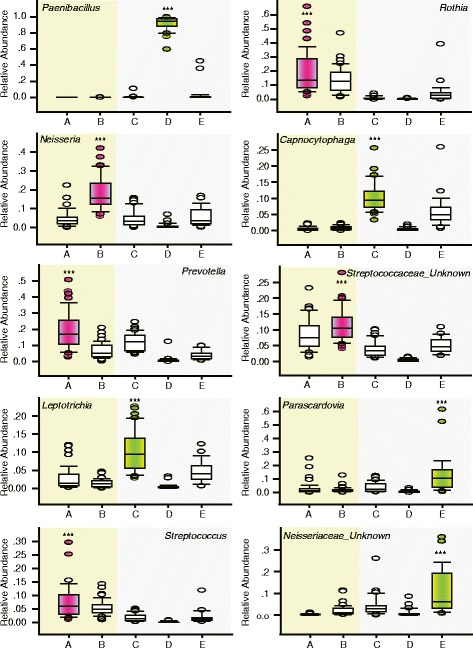Fig. 2.

Top ten bacterial genera contributing to community types. The labels located along the horizontal axis of each panel represent five oral microbial community types (A and B belong to plaque samples, and C-E belong to saliva samples). The relative abundance of the ten most abundant genera in the samples assigned to each of the types (the boxes represent the interquartile range (IQR), and the error bars represent the 95 % confidence intervals; n (community type A) = 45; n (community type B) = 45; n (community type C) = 37; n (community type D) = 26; n (community type E) = 25). Statistical significance was evaluated using the Kruskal-Wallis one-way analysis of variance on ranks. P-values: *** < 0.001, ** < 0.01, and * < 0.05
